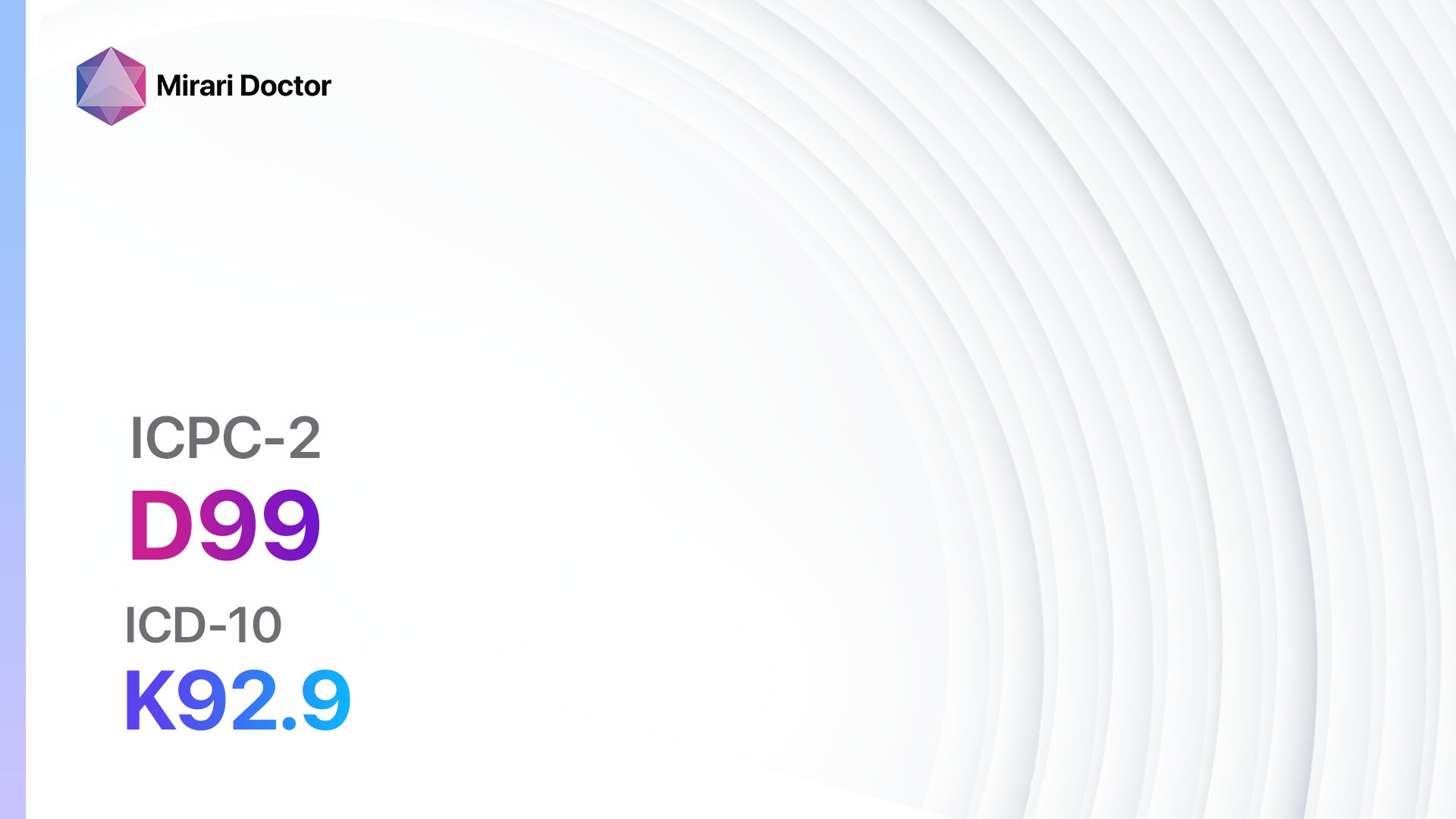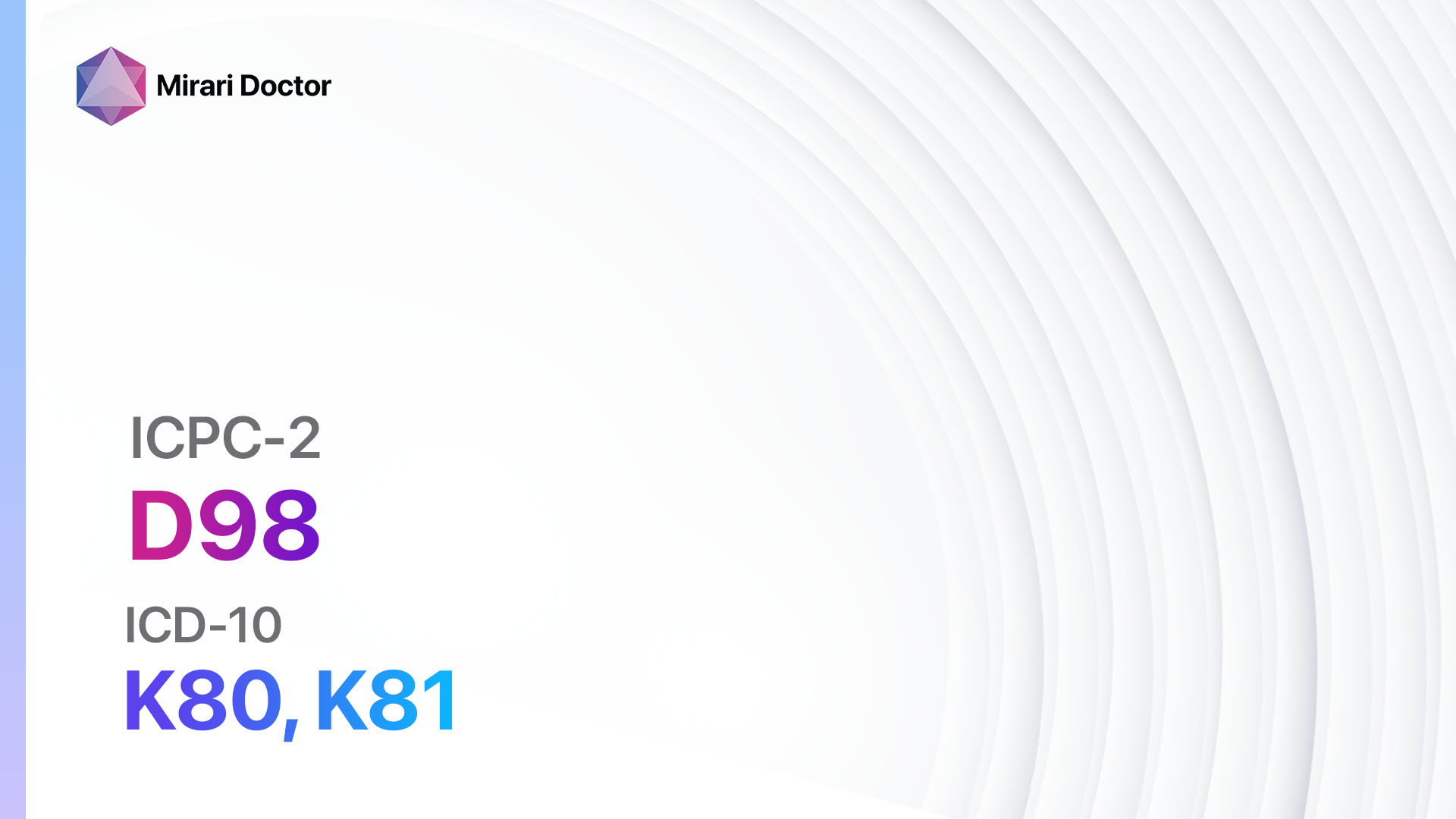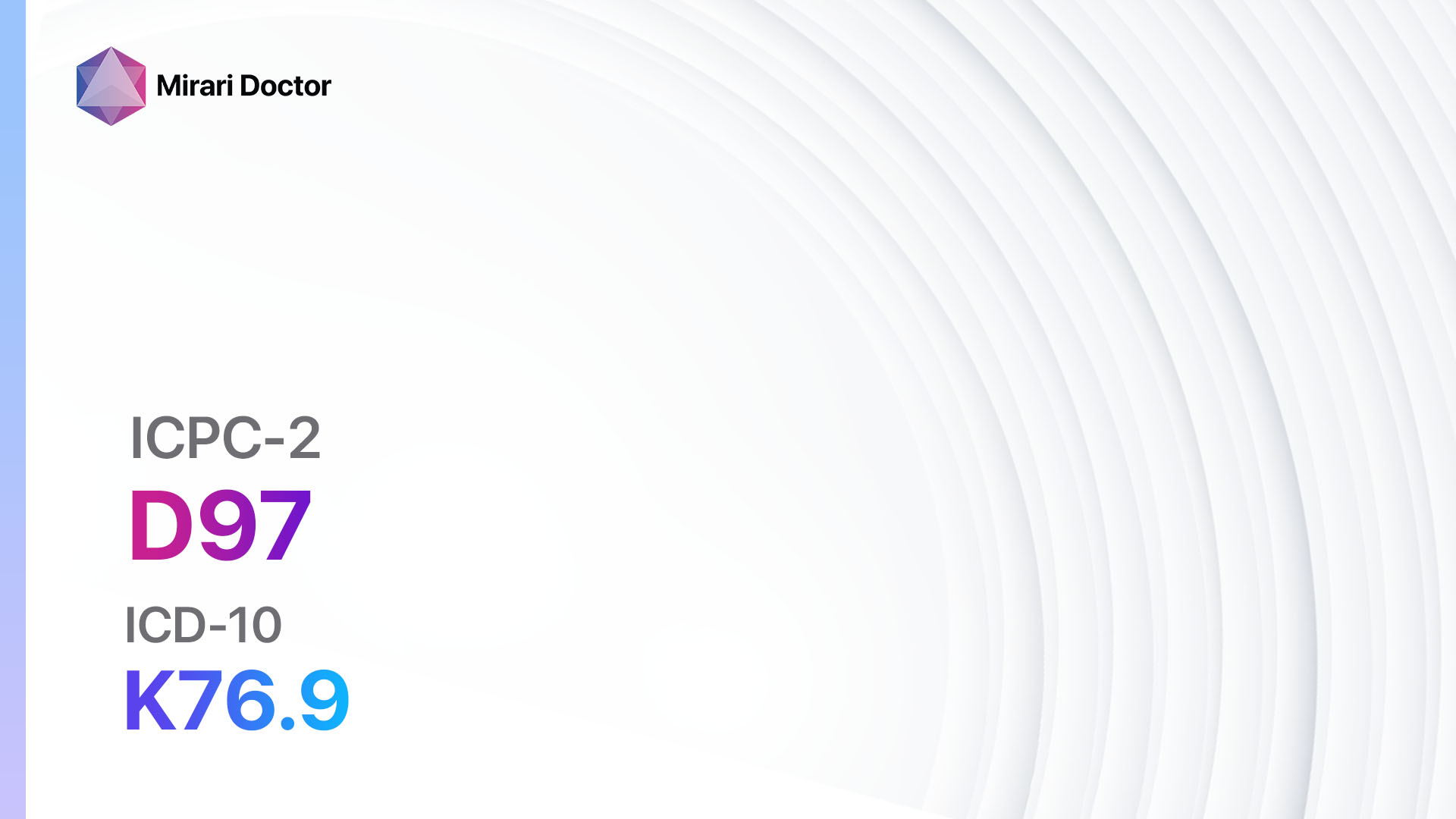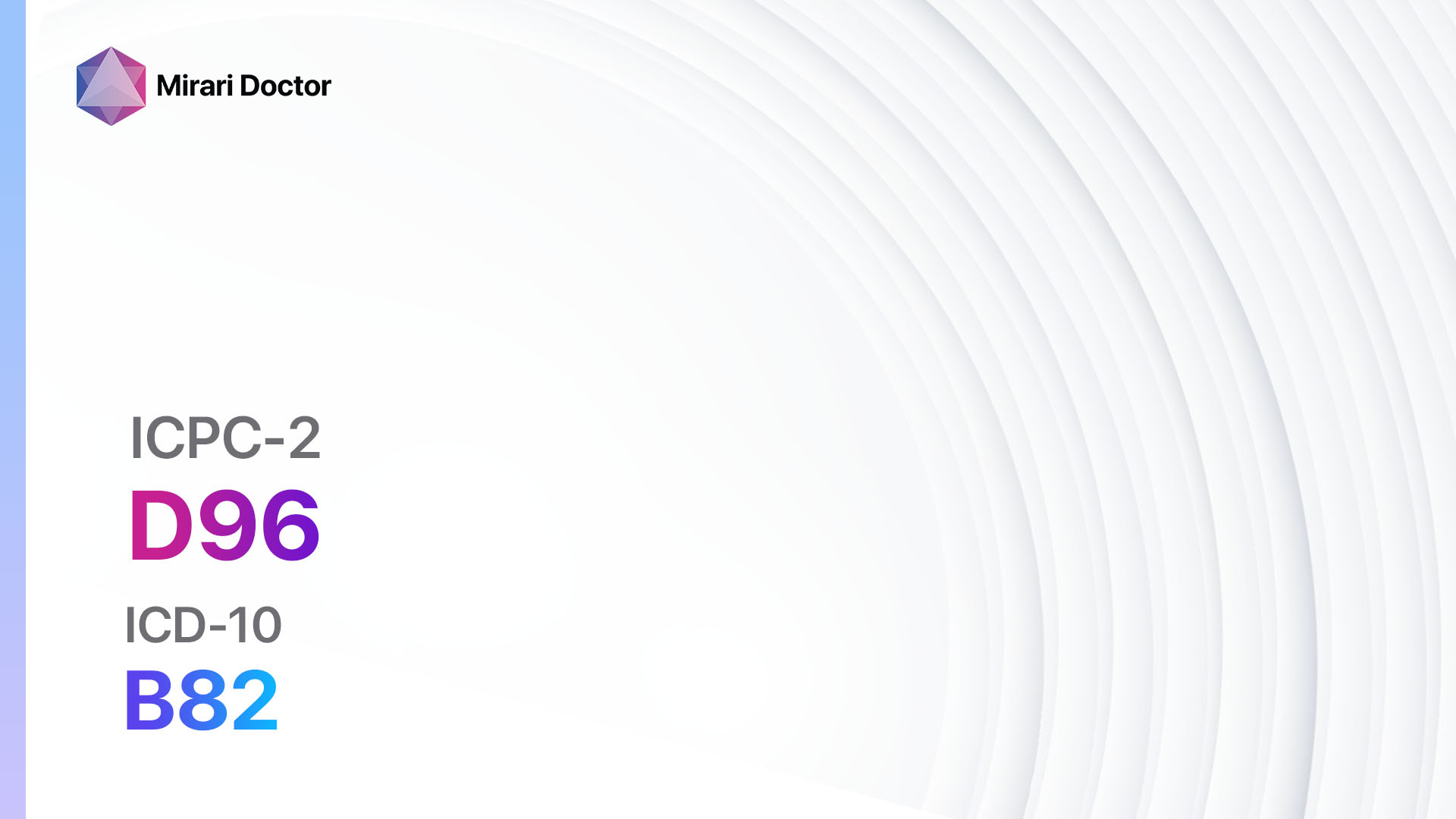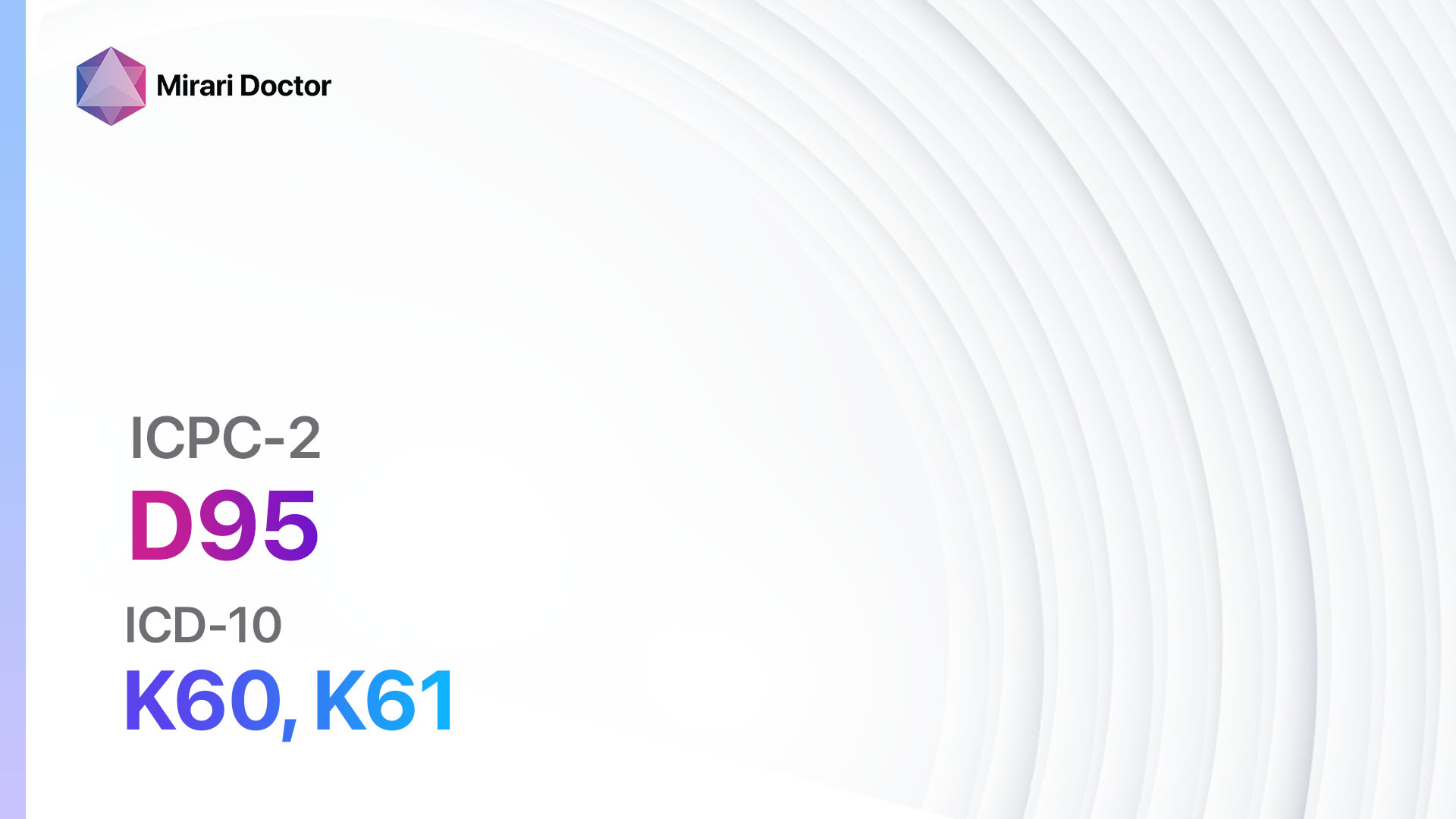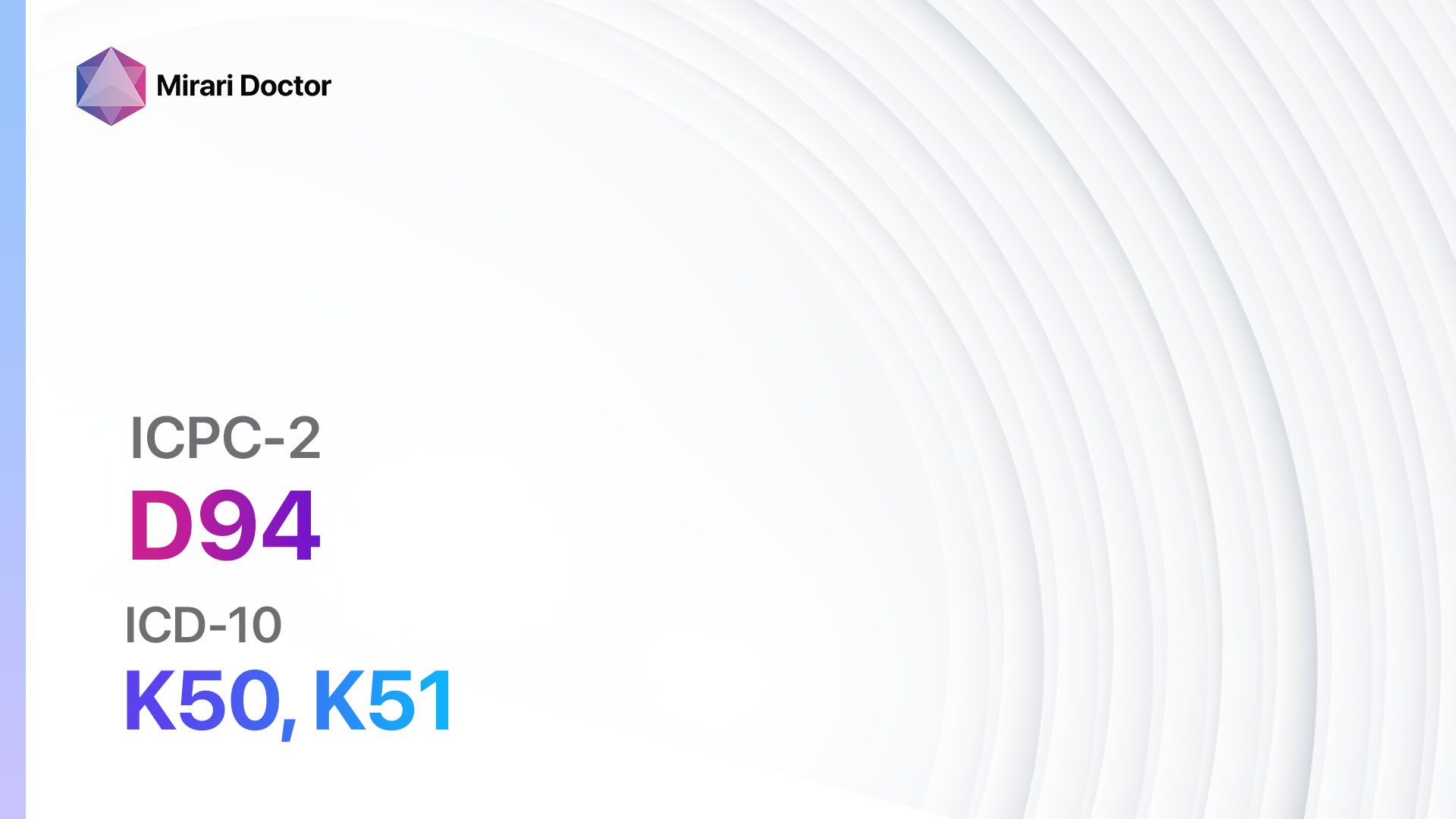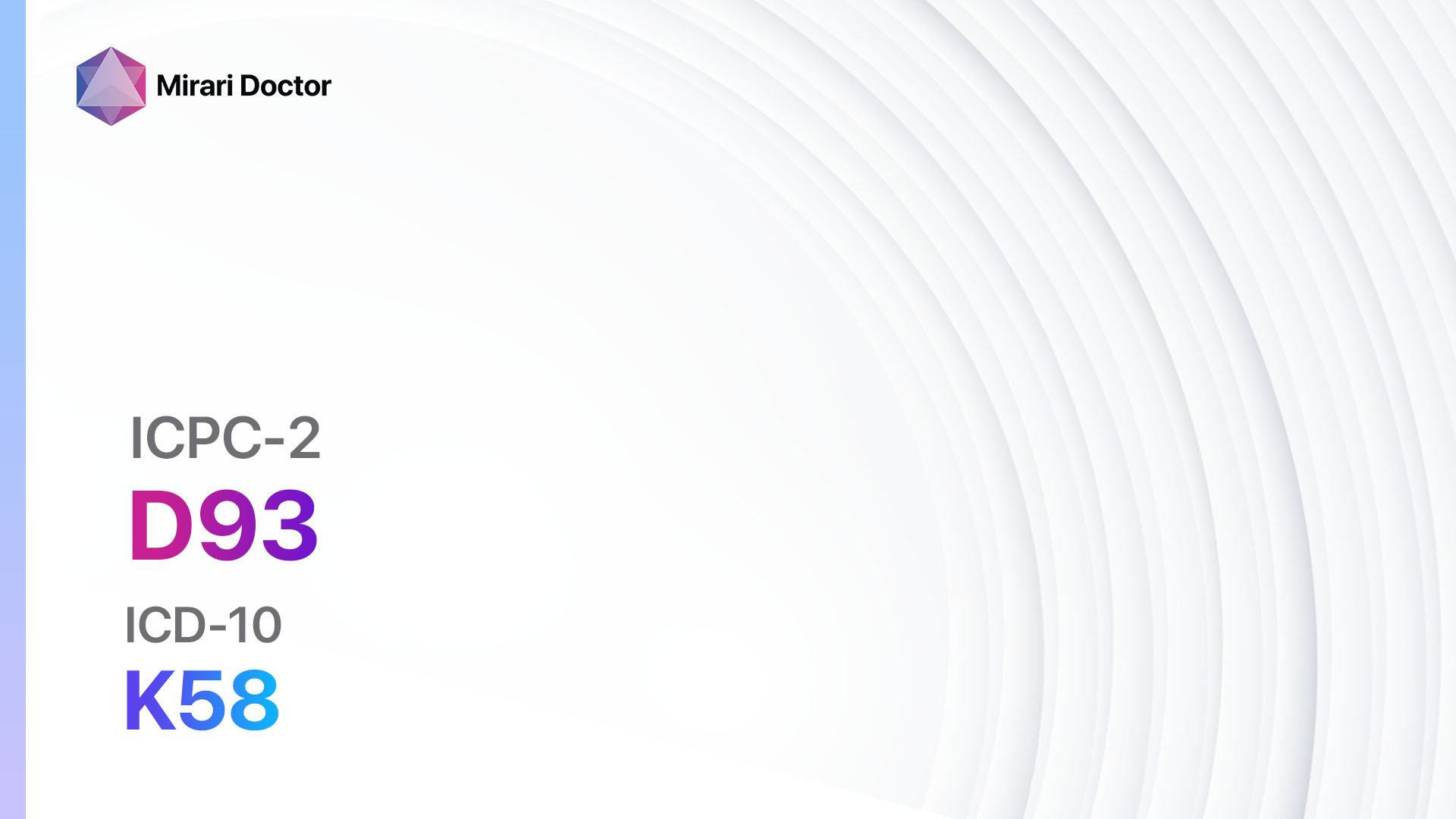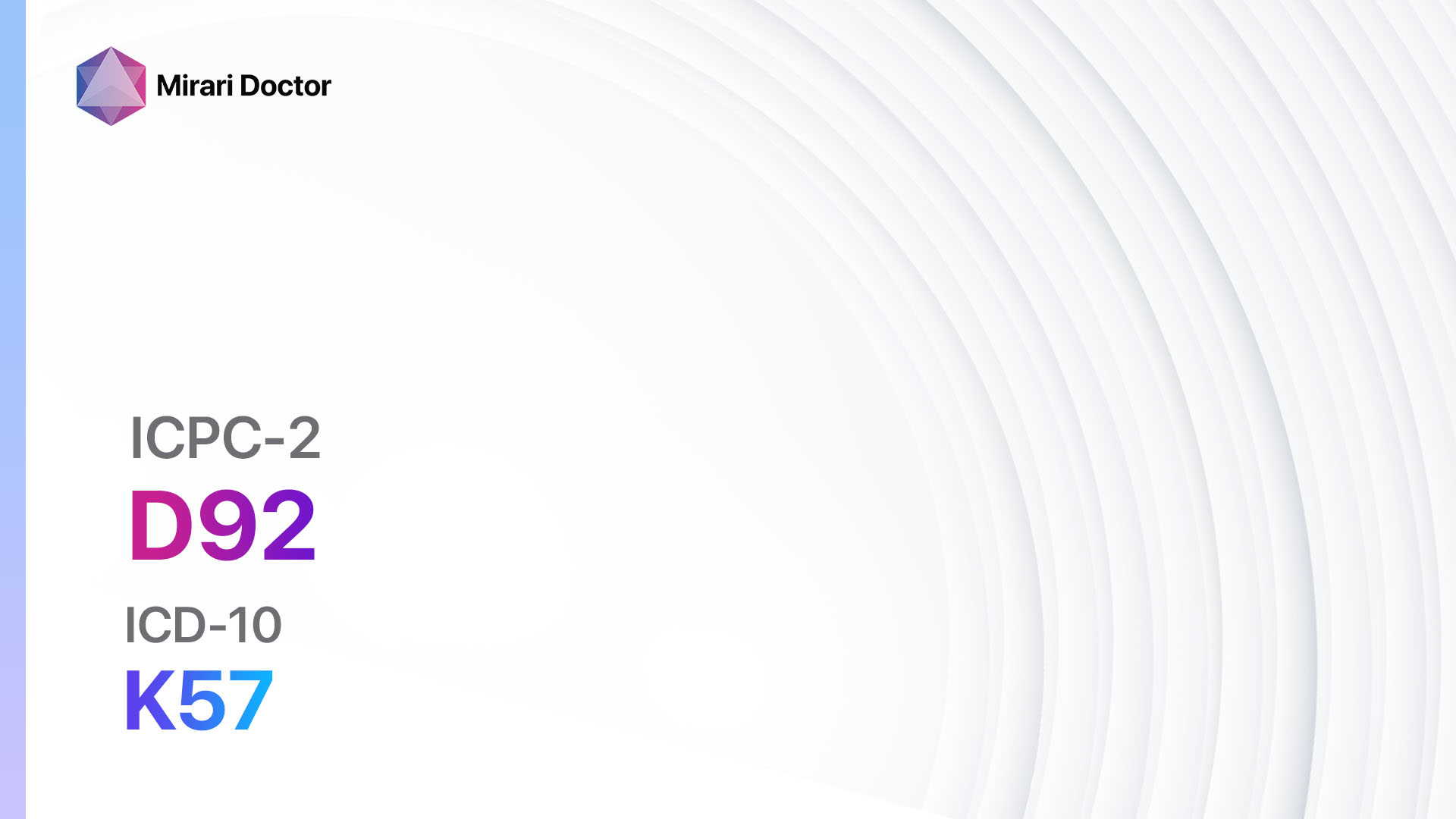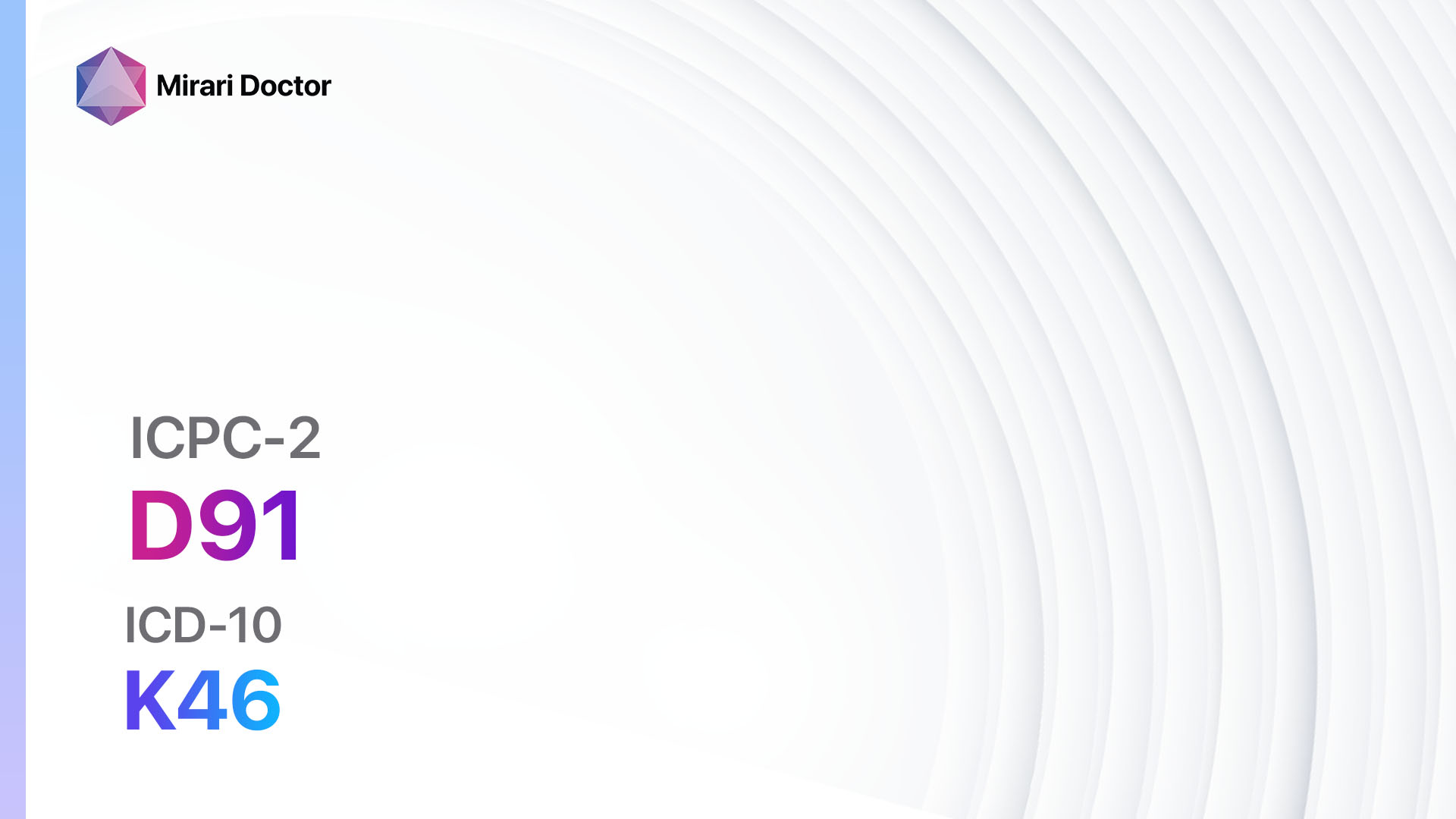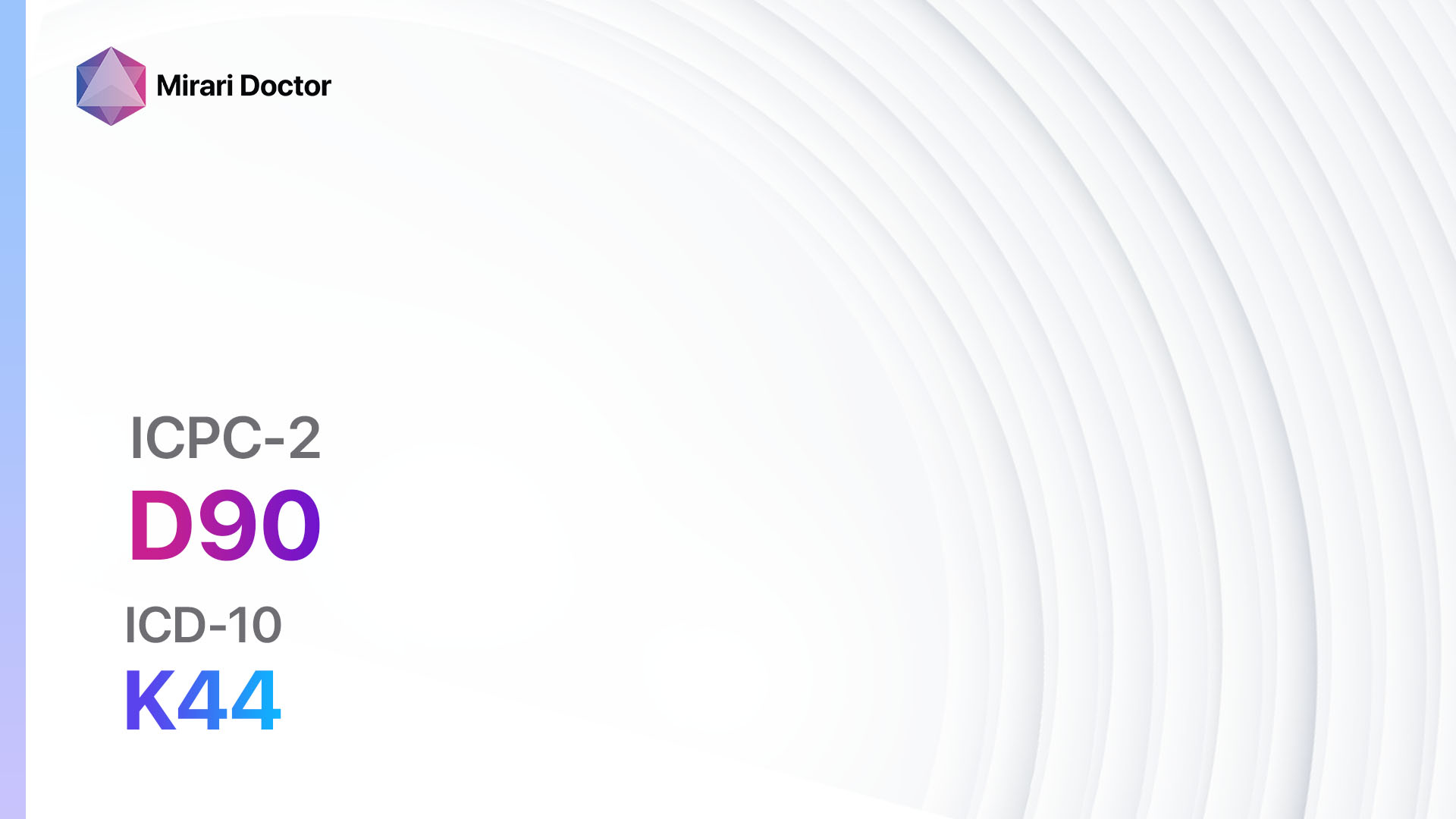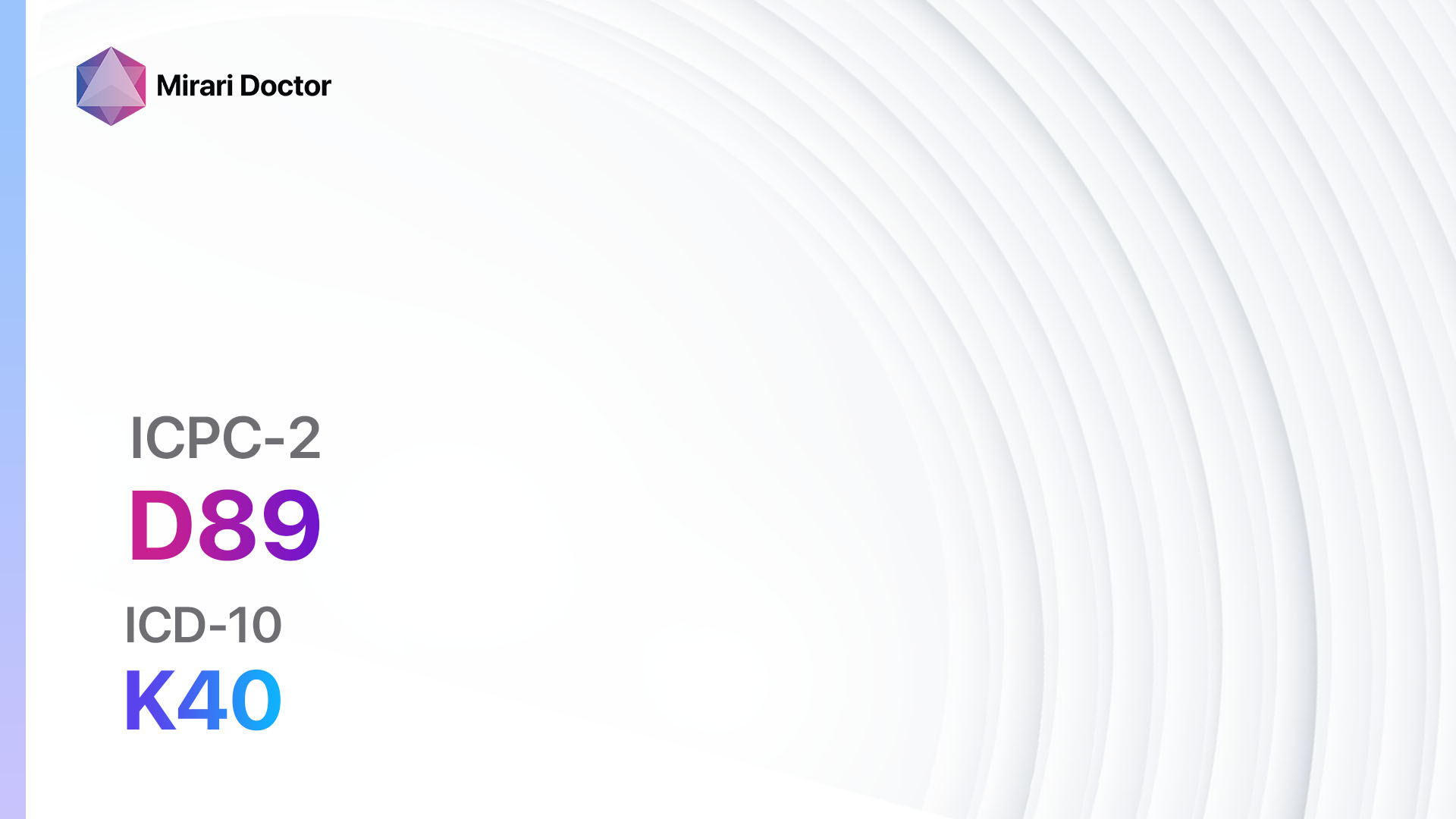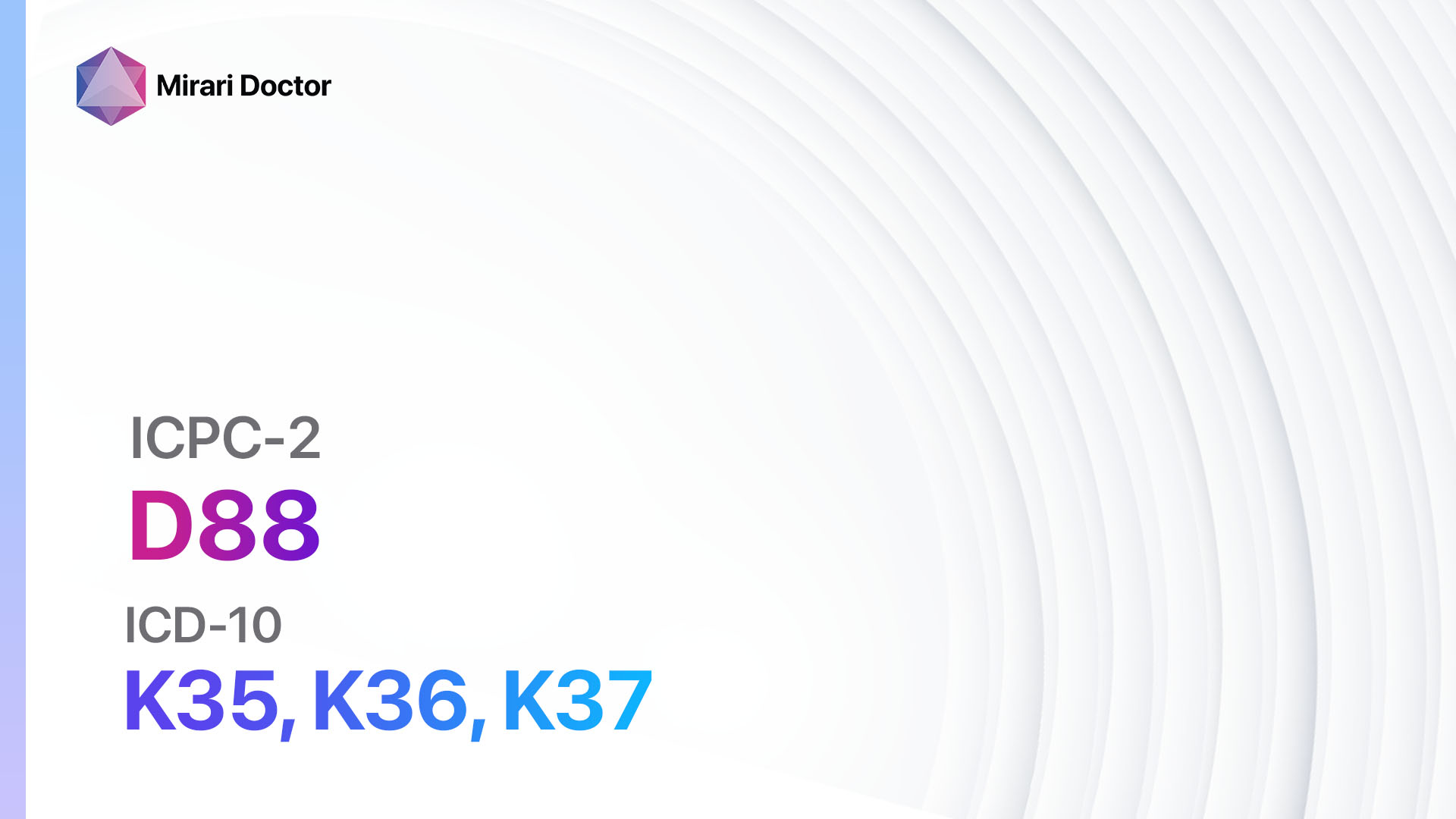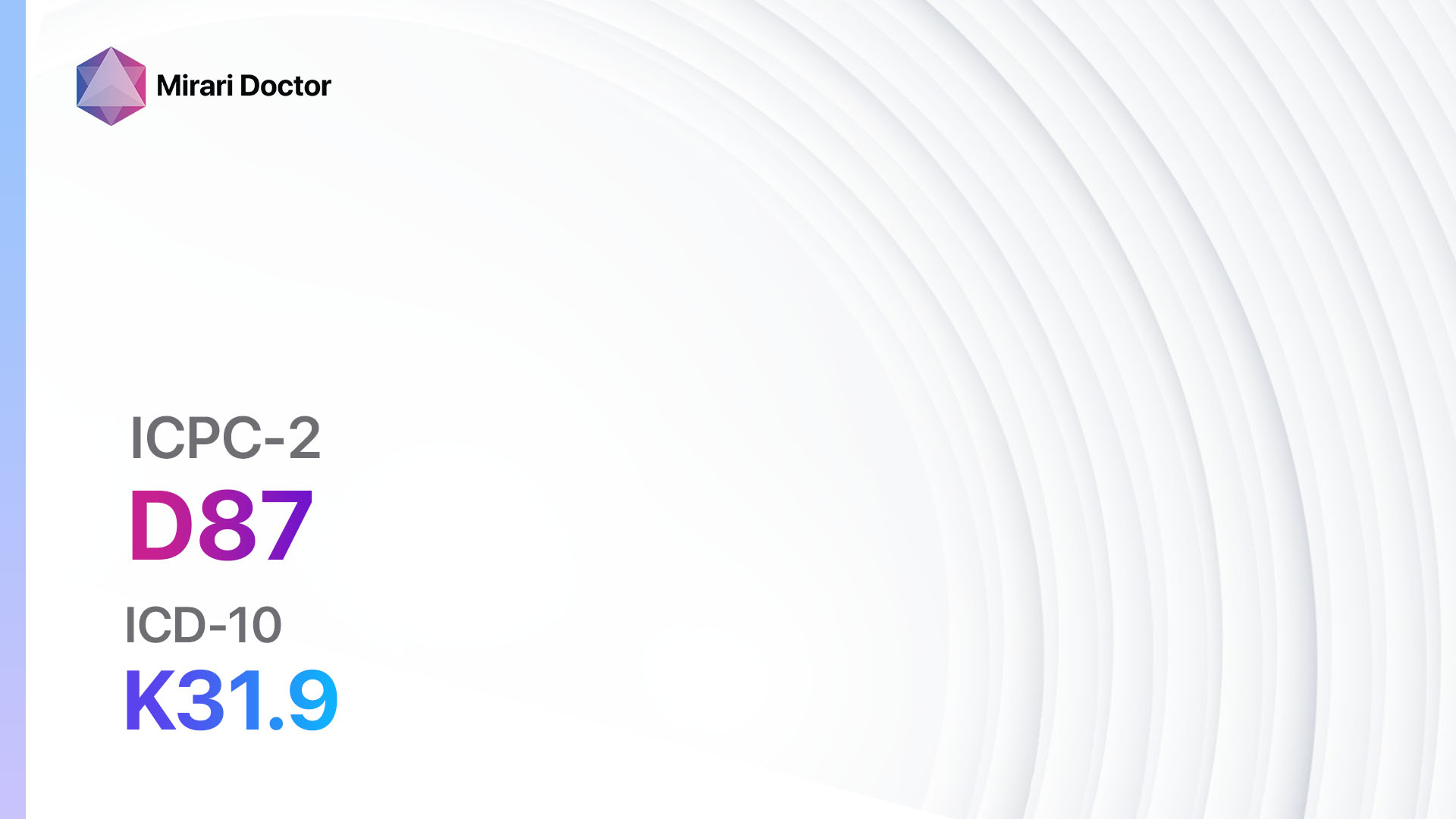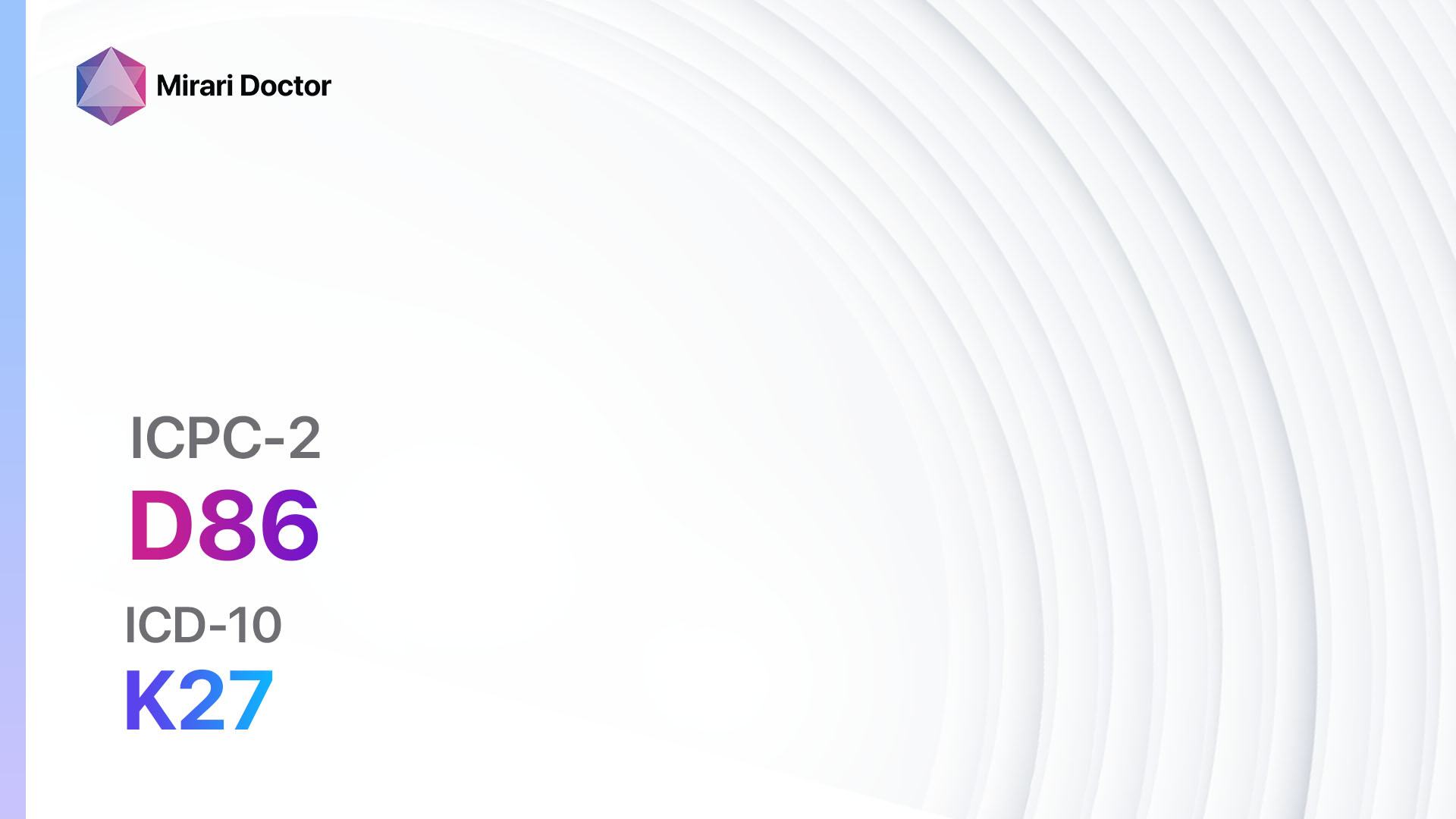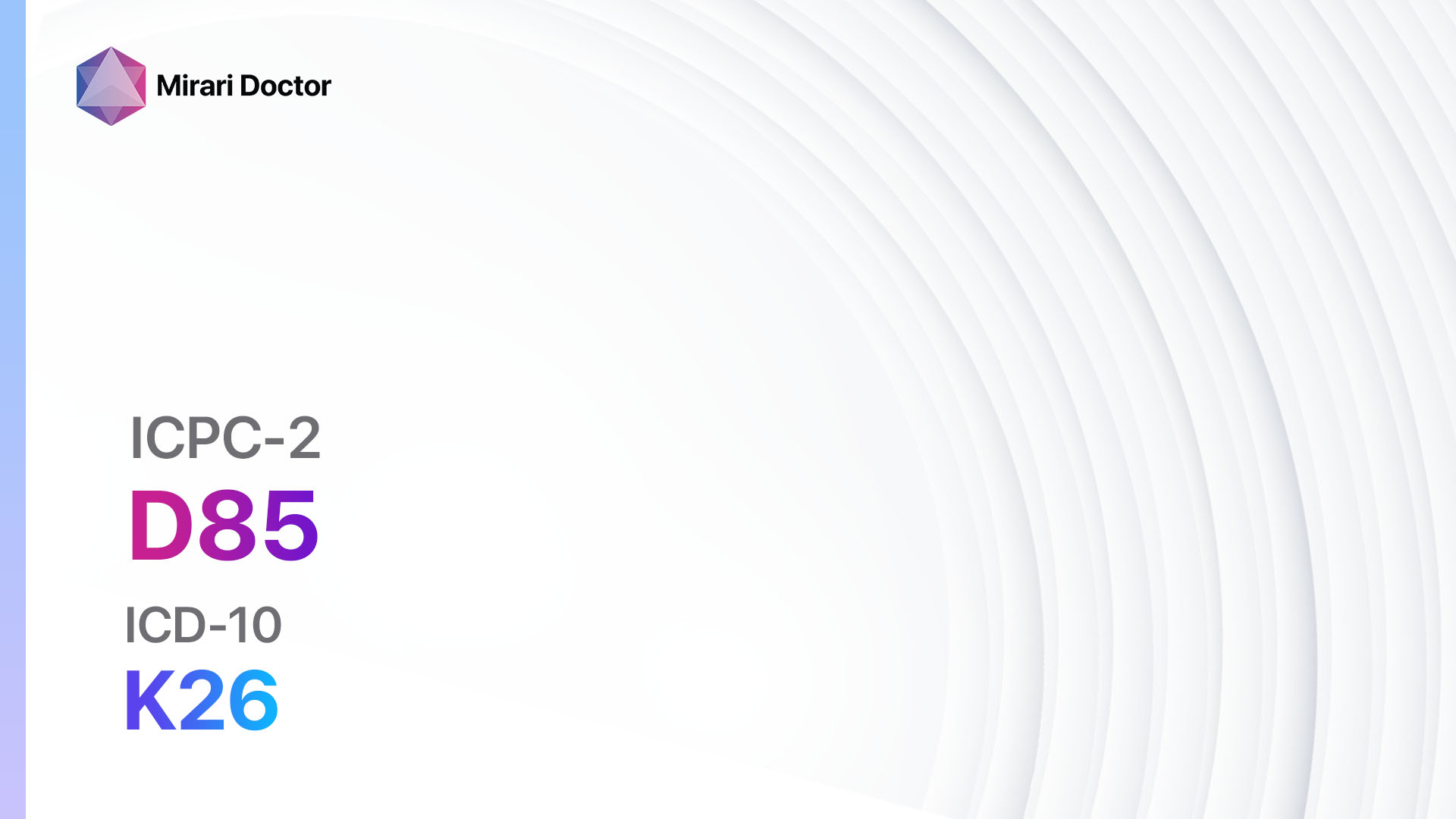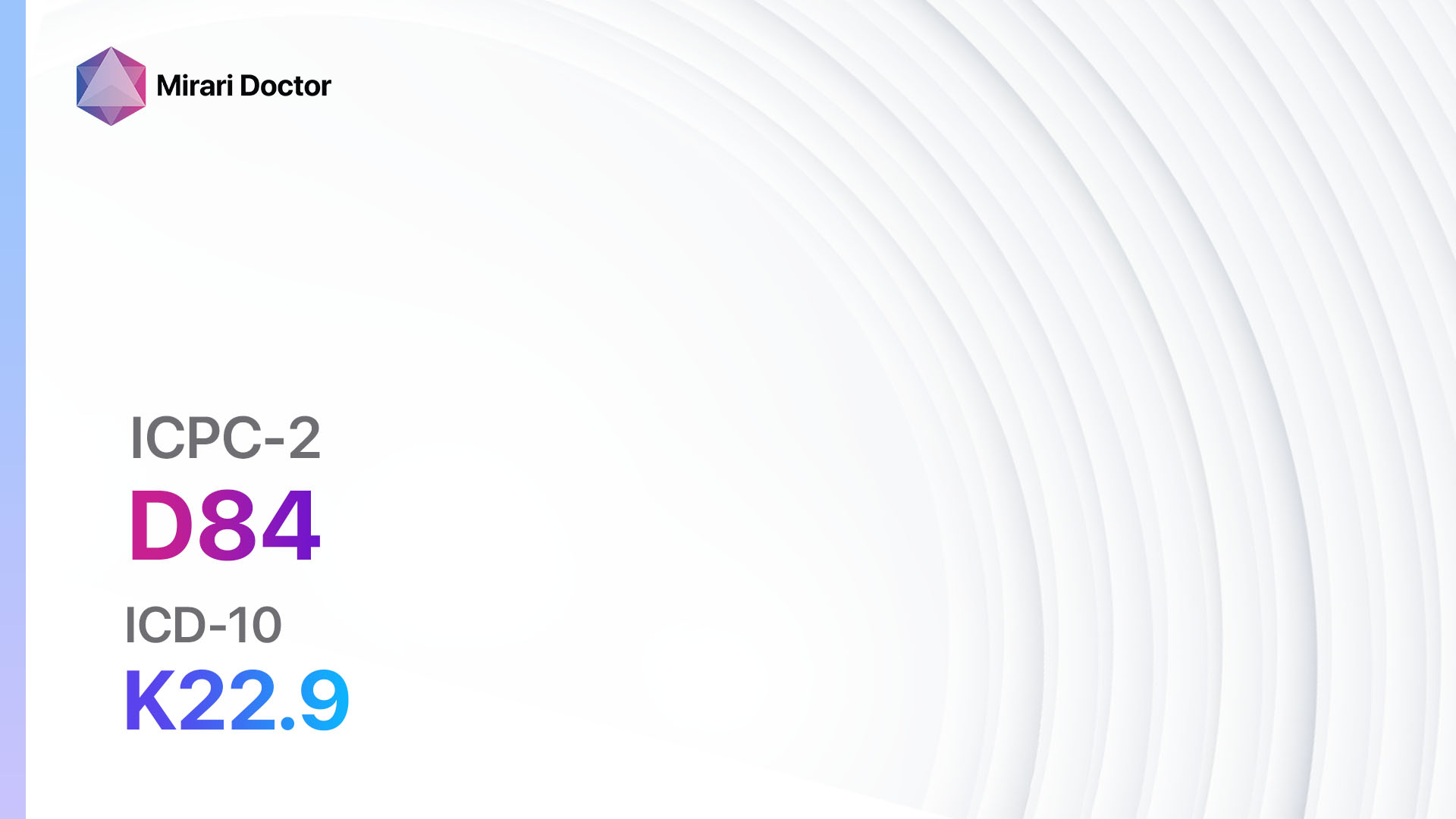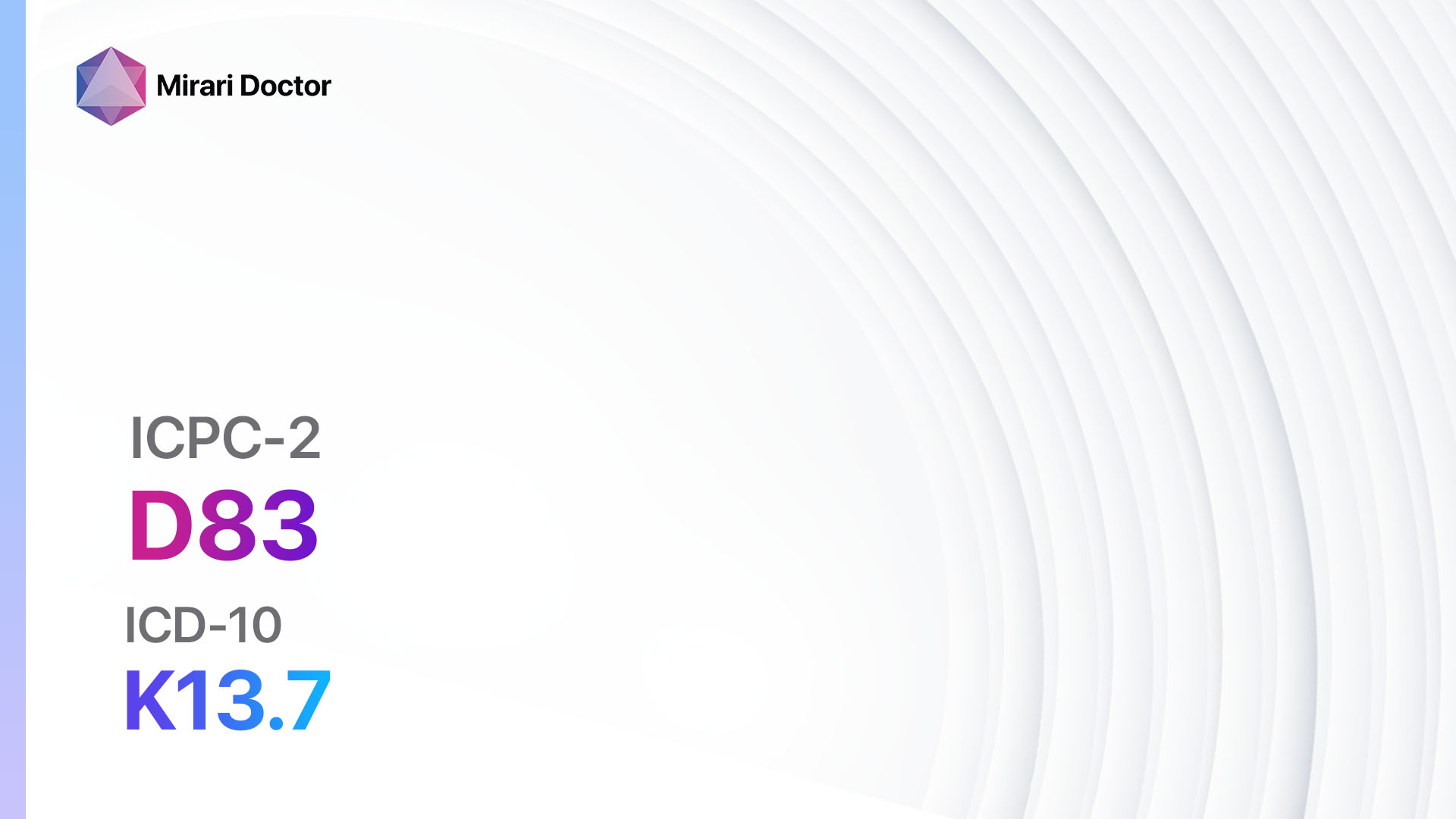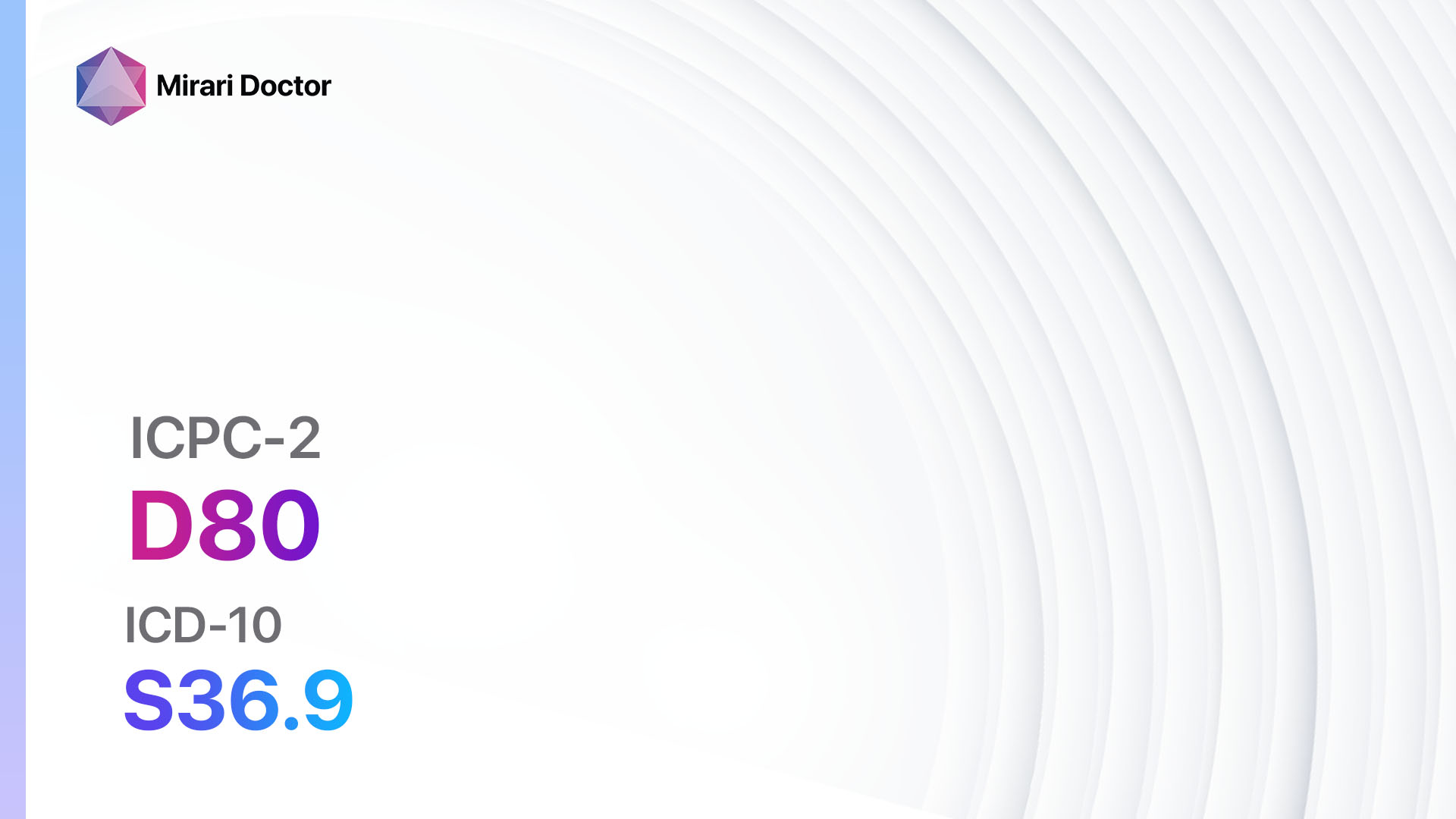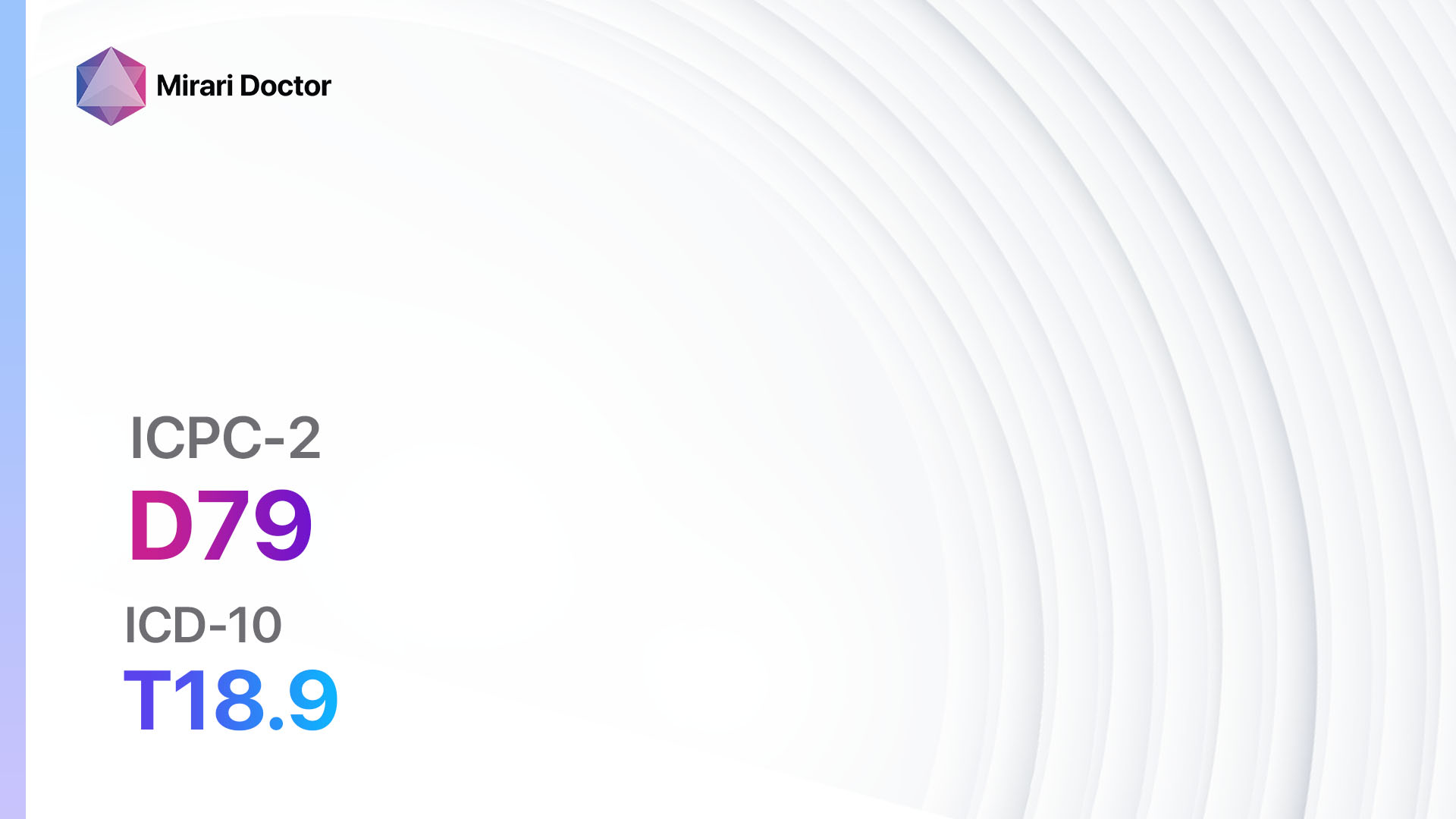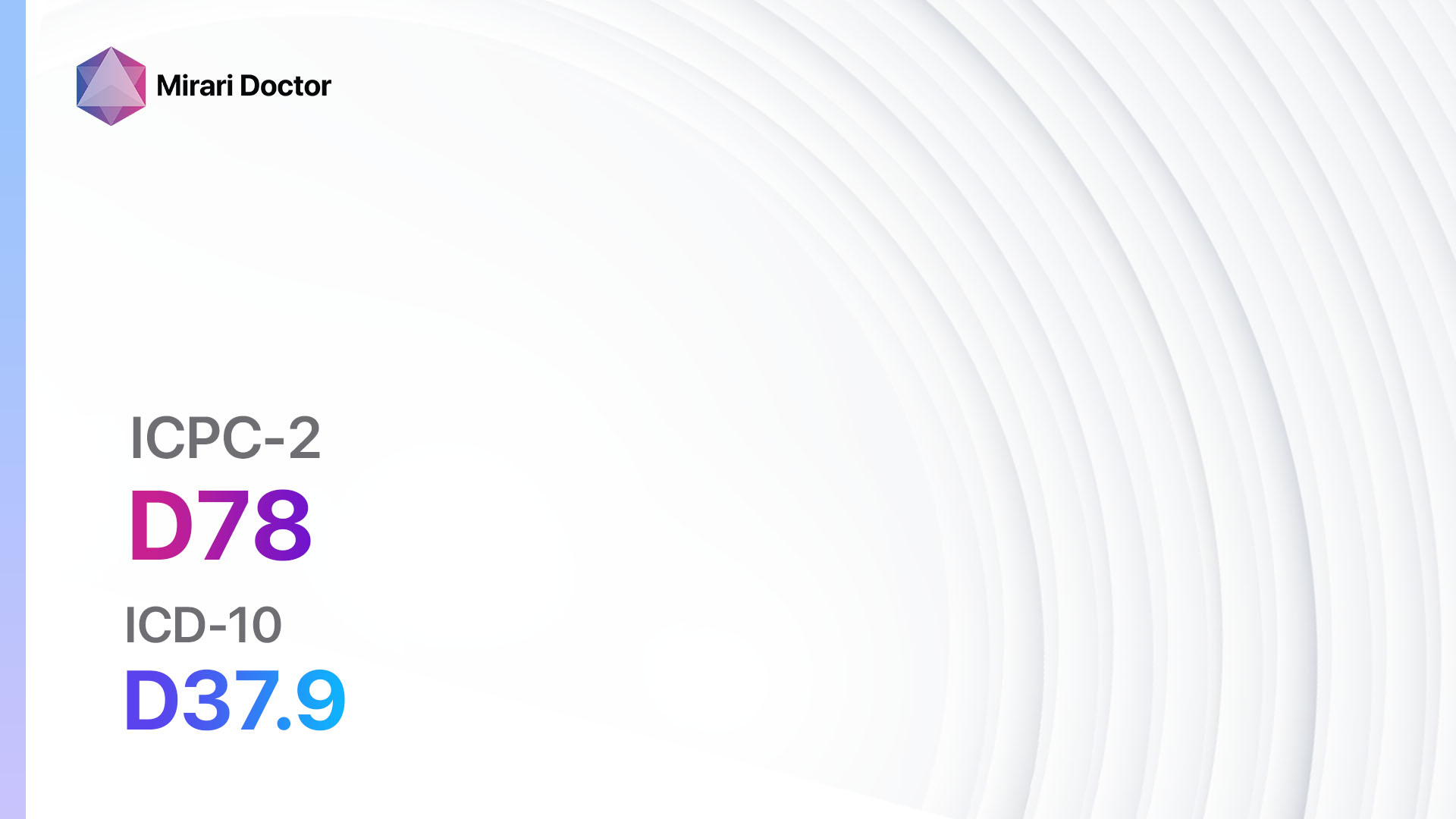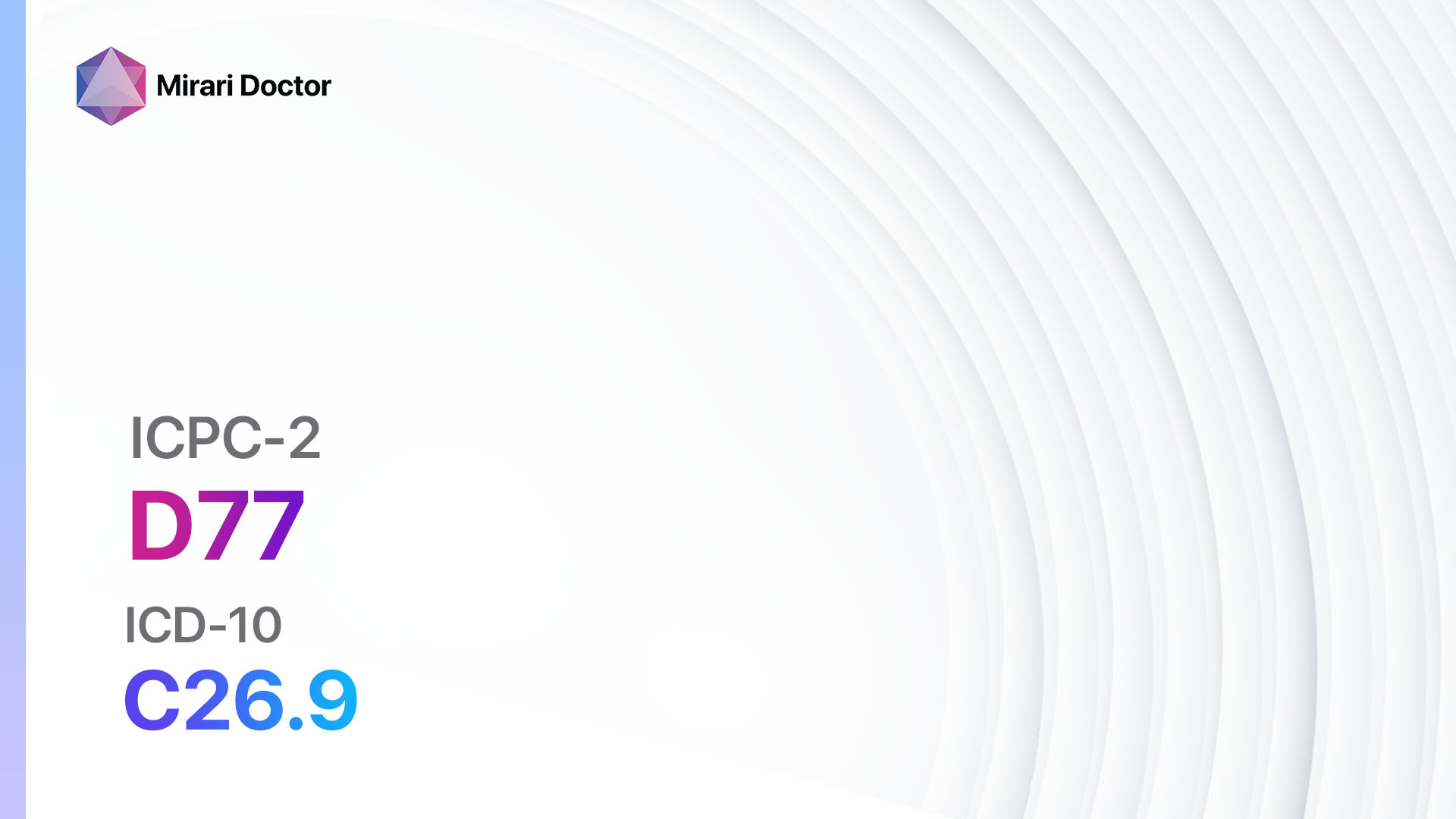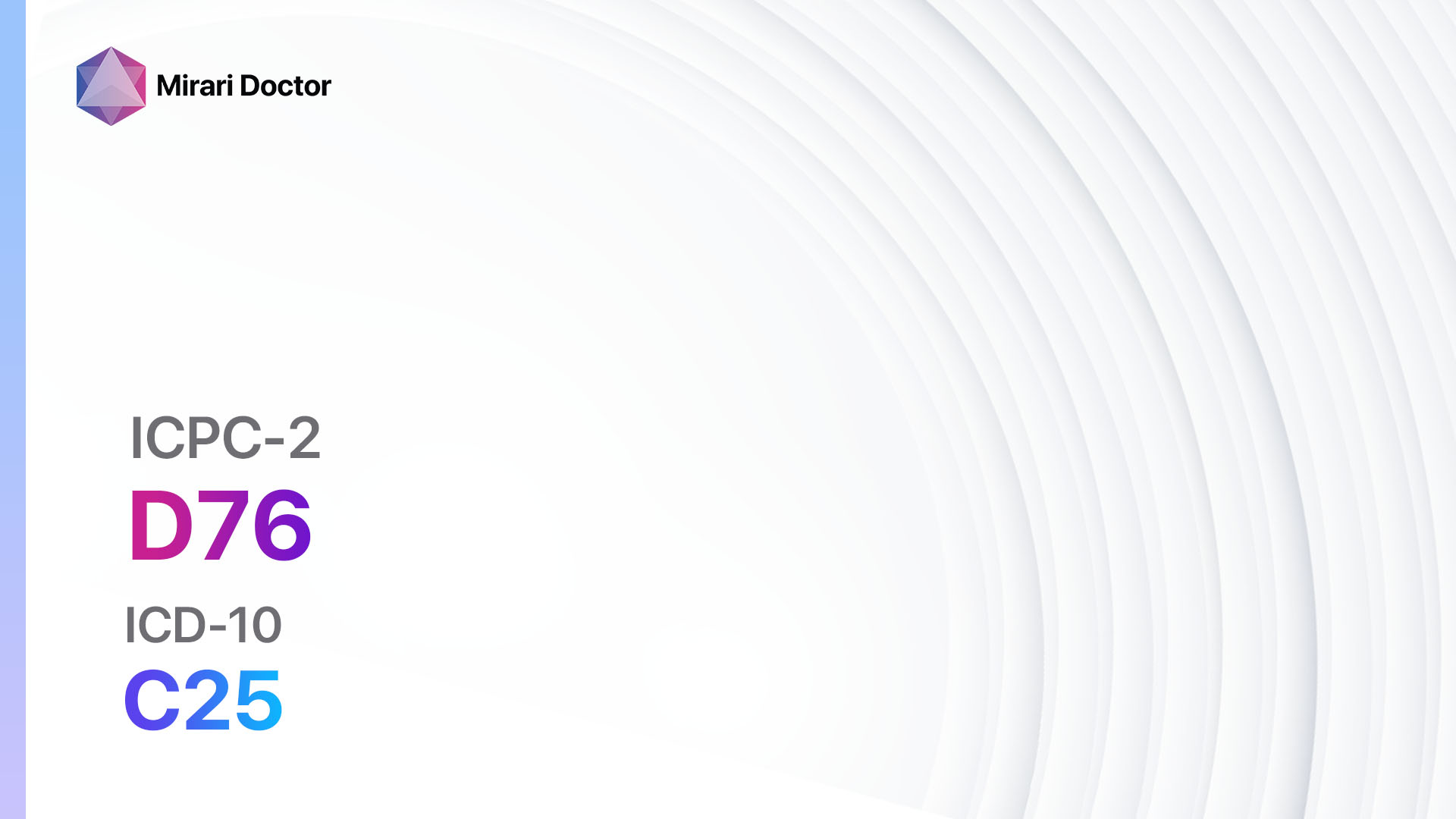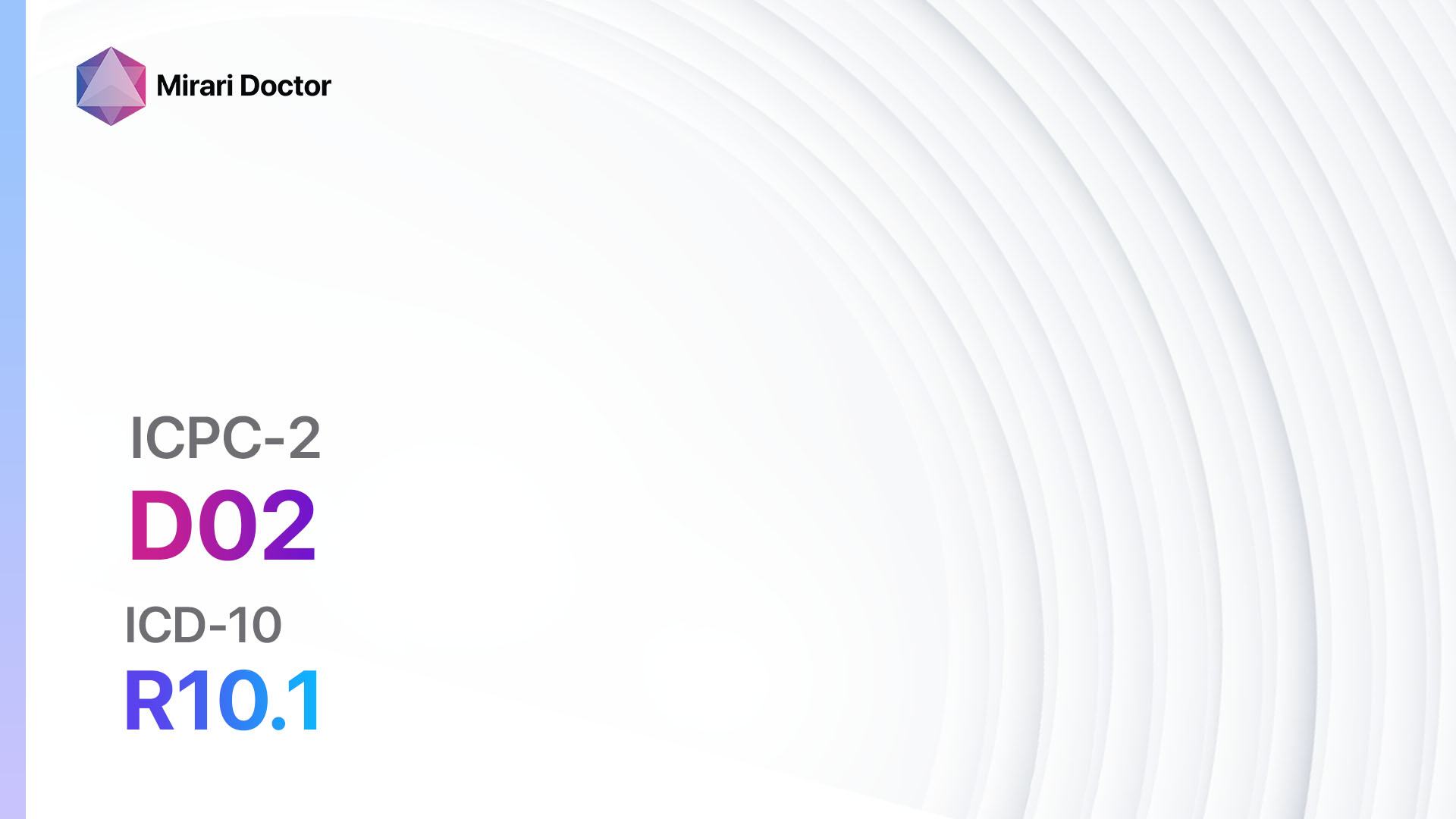
Introduction
Abdominal pain epigastric refers to pain or discomfort in the upper abdomen, specifically in the epigastric region. This condition can be caused by various factors and may indicate underlying medical conditions[1]. The aim of this guide is to provide a comprehensive overview of the symptoms, causes, diagnostic steps, possible interventions, and lifestyle interventions for abdominal pain epigastric.
Codes
Symptoms
- Epigastric pain: A dull, burning, or gnawing pain in the upper abdomen[4].
- Nausea and vomiting: Feeling of queasiness and the urge to vomit[5].
- Heartburn: A burning sensation in the chest, often accompanied by a sour taste in the mouth[6].
- Loss of appetite: Decreased desire to eat or a feeling of early fullness[7].
- Bloating and belching: Feeling of fullness and excessive gas release[8].
- Indigestion: Discomfort or pain in the upper abdomen, often associated with eating[9].
Causes
- Gastritis: Inflammation of the stomach lining, often caused by infection, excessive alcohol consumption, or prolonged use of nonsteroidal anti-inflammatory drugs (NSAIDs).
- Peptic ulcer disease: Open sores that develop on the lining of the stomach or the upper part of the small intestine, usually caused by infection with Helicobacter pylori bacteria or long-term use of NSAIDs[10].
- Gastroesophageal reflux disease (GERD): A chronic condition where stomach acid flows back into the esophagus, causing irritation and inflammation.
- Gallstones: Hardened deposits in the gallbladder that can cause pain when they block the bile ducts.
- Pancreatitis: Inflammation of the pancreas, often caused by gallstones or excessive alcohol consumption.
Diagnostic Steps
Medical History
- Gather information about the patient’s symptoms, including the location, duration, and severity of the pain.
- Ask about any associated symptoms, such as nausea, vomiting, or changes in bowel movements.
- Inquire about the patient’s medical history, including any previous gastrointestinal conditions or surgeries.
- Assess the patient’s risk factors, such as a family history of gastrointestinal diseases or lifestyle factors like smoking or alcohol consumption.
Physical Examination
- Perform a thorough abdominal examination, including palpation of the epigastric region to assess for tenderness or abnormal masses.
- Check for signs of jaundice, such as yellowing of the skin or eyes, which may indicate gallbladder or liver involvement.
- Evaluate the patient’s vital signs, including blood pressure, heart rate, and temperature, to assess for any signs of systemic illness.
Laboratory Tests
- Complete blood count (CBC): To assess for signs of infection or anemia.
- Liver function tests: To evaluate liver function and assess for any abnormalities.
- Amylase and lipase levels: To check for pancreatic inflammation.
- Helicobacter pylori testing: To determine if the patient is infected with the bacteria associated with peptic ulcer disease.
- Stool tests: To check for the presence of blood or infection in the gastrointestinal tract.
Diagnostic Imaging
- Abdominal ultrasound: To visualize the gallbladder, liver, and other abdominal organs for signs of inflammation or abnormalities.
- Upper gastrointestinal (GI) endoscopy: A procedure in which a flexible tube with a camera is inserted through the mouth to examine the esophagus, stomach, and upper part of the small intestine.
- CT scan: To obtain detailed images of the abdomen and identify any structural abnormalities or signs of inflammation.
- Barium swallow or upper GI series: A series of X-rays taken after the patient drinks a contrast material to evaluate the esophagus, stomach, and small intestine.
Other Tests
- Esophageal pH monitoring: To measure the amount of acid reflux in the esophagus over a 24-hour period.
- Gastric emptying study: To assess the rate at which food leaves the stomach and enters the small intestine.
- HIDA scan: A nuclear medicine test to evaluate the function of the gallbladder and bile ducts.
- Endoscopic ultrasound: A procedure that combines endoscopy and ultrasound to obtain detailed images of the digestive tract and surrounding structures.
Follow-up and Patient Education
- Schedule a follow-up appointment to review the results of diagnostic tests and discuss further treatment options.
- Provide education on lifestyle modifications, such as dietary changes, weight management, and stress reduction techniques.
- Discuss the importance of adherence to prescribed medications and the potential need for long-term management of the underlying condition.
Possible Interventions
Traditional Interventions
Medications:
Top 5 drugs for Abdominal pain epigastric:
- Proton pump inhibitors (PPIs) (e.g., Omeprazole, Esomeprazole, Pantoprazole):
- Cost: Generic versions can be $10-$50/month.
- Contraindications: Hypersensitivity to PPIs.
- Side effects: Headache, diarrhea, abdominal pain.
- Severe side effects: Clostridium difficile infection, vitamin B12 deficiency.
- Drug interactions: Clopidogrel, certain antifungal medications.
- Warning: Long-term use may increase the risk of fractures and certain infections.
- H2 receptor blockers (e.g., Ranitidine, Famotidine, Cimetidine):
- Cost: Generic versions can be $10-$30/month.
- Contraindications: Hypersensitivity to H2 receptor blockers.
- Side effects: Headache, dizziness, constipation.
- Severe side effects: Rare but serious adverse effects include blood disorders and liver problems.
- Drug interactions: Certain antifungal medications, anticoagulants.
- Warning: May mask symptoms of gastric cancer.
- Antacids (e.g., Calcium carbonate, Aluminum hydroxide, Magnesium hydroxide):
- Cost: Over-the-counter options are available for <$10/month.
- Contraindications: Hypersensitivity to antacids.
- Side effects: Constipation or diarrhea, stomach cramps.
- Severe side effects: Rare but serious adverse effects include kidney problems and electrolyte imbalances.
- Drug interactions: Certain antibiotics, antifungal medications.
- Warning: Long-term use may lead to metabolic alkalosis or kidney stones.
- Antibiotics (e.g., Amoxicillin, Clarithromycin, Metronidazole):
- Cost: Generic versions can be $10-$50/month.
- Contraindications: Hypersensitivity to antibiotics.
- Side effects: Nausea, diarrhea, rash.
- Severe side effects: Rare but serious adverse effects include severe allergic reactions and Clostridium difficile infection.
- Drug interactions: Certain anticoagulants, antifungal medications.
- Warning: Compliance with the prescribed regimen is crucial to treat Helicobacter pylori infection.
- Antispasmodics (e.g., Dicyclomine, Hyoscyamine):
- Cost: Generic versions can be $10-$30/month.
- Contraindications: Hypersensitivity to antispasmodics, glaucoma.
- Side effects: Dry mouth, blurred vision, constipation.
- Severe side effects: Rare but serious adverse effects include urinary retention and increased heart rate.
- Drug interactions: Certain antidepressants, antihistamines.
- Warning: May cause drowsiness or dizziness.
Alternative Drugs:
- Prokinetic agents (e.g., Metoclopramide): Enhance gastrointestinal motility and reduce symptoms of indigestion. Cost: Generic versions can be $10-$30/month.
- Antidepressants (e.g., Amitriptyline, Nortriptyline): Can help manage chronic abdominal pain by modulating pain perception. Cost: Generic versions can be $10-$30/month.
- Antianxiety medications (e.g., Diazepam, Lorazepam): May be prescribed for patients with anxiety-related abdominal pain. Cost: Generic versions can be $10-$30/month.
- Antiemetics (e.g., Ondansetron, Promethazine): Used to relieve nausea and vomiting associated with abdominal pain. Cost: Generic versions can be $10-$50/month.
- Antidiarrheal agents (e.g., Loperamide, Bismuth subsalicylate): Can be used to manage diarrhea symptoms. Cost: Generic versions can be $10-$30/month.
Surgical Procedures:
- Laparoscopic cholecystectomy: Surgical removal of the gallbladder to treat gallstones or gallbladder inflammation. Cost: $10,000 to $30,000.
- Fundoplication: A surgical procedure to strengthen the lower esophageal sphincter and prevent acid reflux in patients with severe GERD. Cost: $10,000 to $30,000.
Alternative Interventions
- Acupuncture: May help alleviate abdominal pain and improve overall well-being. Cost: $60-$120 per session.
- Herbal supplements: Certain herbs, such as ginger or peppermint, may have anti-inflammatory or digestive properties. Cost: Varies depending on the specific supplement.
- Probiotics: Can help restore the balance of gut bacteria and improve digestive health. Cost: $10-$50 per month.
- Mind-body techniques: Practices like yoga, meditation, or deep breathing exercises may help reduce stress and improve symptoms. Cost: Varies depending on the specific practice.
- Dietary modifications: Avoiding trigger foods, such as spicy or fatty foods, and adopting a balanced diet rich in fruits, vegetables, and whole grains. Cost: Varies depending on individual food choices.
Lifestyle Interventions
- Weight management: Achieving and maintaining a healthy weight can reduce pressure on the stomach and improve symptoms. Cost: Varies depending on individual choices, such as gym memberships or dietary programs.
- Smoking cessation: Quitting smoking can help reduce the risk of developing or worsening abdominal pain epigastric. Cost: Varies depending on the chosen smoking cessation method.
- Stress reduction techniques: Engaging in activities like exercise, meditation, or counseling to manage stress levels. Cost: Varies depending on the chosen stress reduction method.
- Regular exercise: Engaging in moderate-intensity exercise for at least 150 minutes per week can improve overall health and digestion. Cost: Varies depending on individual choices, such as gym memberships or fitness classes.
- Sleep hygiene: Establishing a regular sleep schedule and creating a conducive sleep environment can improve overall well-being. Cost: Varies depending on individual choices, such as purchasing a comfortable mattress or using relaxation techniques.
It is important to note that the cost ranges provided are approximate and may vary depending on the location and availability of the interventions. It is recommended to consult with a healthcare professional for personalized treatment options and cost estimates.
Mirari Cold Plasma Alternative Intervention
Understanding Mirari Cold Plasma
- Safe and Non-Invasive Treatment: Mirari Cold Plasma is a safe and non-invasive treatment option for various skin conditions. It does not require incisions, minimizing the risk of scarring, bleeding, or tissue damage.
- Efficient Extraction of Foreign Bodies: Mirari Cold Plasma facilitates the removal of foreign bodies from the skin by degrading and dissociating organic matter, allowing easier access and extraction.
- Pain Reduction and Comfort: Mirari Cold Plasma has a local analgesic effect, providing pain relief during the treatment, making it more comfortable for the patient.
- Reduced Risk of Infection: Mirari Cold Plasma has antimicrobial properties, effectively killing bacteria and reducing the risk of infection.
- Accelerated Healing and Minimal Scarring: Mirari Cold Plasma stimulates wound healing and tissue regeneration, reducing healing time and minimizing the formation of scars.
Mirari Cold Plasma Prescription
Video instructions for using Mirari Cold Plasma Device – D02 Abdominal pain epigastric (ICD-10:R10.1)
| Mild | Moderate | Severe |
| Mode setting: 1 (Infection) Location: 0 (Localized) Morning: 15 minutes, Evening: 15 minutes |
Mode setting: 1 (Infection) Location: 0 (Localized) Morning: 30 minutes, Lunch: 30 minutes, Evening: 30 minutes |
Mode setting: 1 (Infection) Location: 0 (Localized) Morning: 30 minutes, Lunch: 30 minutes, Evening: 30 minutes |
| Mode setting: 2 (Wound Healing) Location: 3 (Kidney, Liver & Spleen) Morning: 15 minutes, Evening: 15 minutes |
Mode setting: 2 (Wound Healing) Location: 3 (Kidney, Liver & Spleen) Morning: 30 minutes, Lunch: 30 minutes, Evening: 30 minutes |
Mode setting: 2 (Wound Healing) Location: 3 (Kidney, Liver & Spleen) Morning: 30 minutes, Lunch: 30 minutes, Evening: 30 minutes |
| Total Morning: 30 minutes approx. $5 USD, Evening: 30 minutes approx. $5 USD |
Total Morning: 60 minutes approx. $10 USD, Lunch: 60 minutes approx. $10 USD, Evening: 60 minutes approx. $10 USD |
Total Morning: 60 minutes approx. $10 USD, Lunch: 60 minutes approx. $10 USD, Evening: 60 minutes approx. $10 USD |
| Usual treatment for 7-60 days approx. $70 USD – $600 USD | Usual treatment for 6-8 weeks approx. $1,260 USD – $1,680 USD |
Usual treatment for 3-6 months approx. $2,700 USD – $5,400 USD
|
 |
|
Use the Mirari Cold Plasma device to treat Abdominal pain epigastric effectively.
WARNING: MIRARI COLD PLASMA IS DESIGNED FOR THE HUMAN BODY WITHOUT ANY ARTIFICIAL OR THIRD PARTY PRODUCTS. USE OF OTHER PRODUCTS IN COMBINATION WITH MIRARI COLD PLASMA MAY CAUSE UNPREDICTABLE EFFECTS, HARM OR INJURY. PLEASE CONSULT A MEDICAL PROFESSIONAL BEFORE COMBINING ANY OTHER PRODUCTS WITH USE OF MIRARI.
Step 1: Cleanse the Skin
- Start by cleaning the affected area of the skin with a gentle cleanser or mild soap and water. Gently pat the area dry with a clean towel.
Step 2: Prepare the Mirari Cold Plasma device
- Ensure that the Mirari Cold Plasma device is fully charged or has fresh batteries as per the manufacturer’s instructions. Make sure the device is clean and in good working condition.
- Switch on the Mirari device using the power button or by following the specific instructions provided with the device.
- Some Mirari devices may have adjustable settings for intensity or treatment duration. Follow the manufacturer’s instructions to select the appropriate settings based on your needs and the recommended guidelines.
Step 3: Apply the Device
- Place the Mirari device in direct contact with the affected area of the skin. Gently glide or hold the device over the skin surface, ensuring even coverage of the area experiencing.
- Slowly move the Mirari device in a circular motion or follow a specific pattern as indicated in the user manual. This helps ensure thorough treatment coverage.
Step 4: Monitor and Assess:
- Keep track of your progress and evaluate the effectiveness of the Mirari device in managing your Abdominal pain epigastric. If you have any concerns or notice any adverse reactions, consult with your health care professional.
Note
This guide is for informational purposes only and should not replace the advice of a medical professional. Always consult with your healthcare provider or a qualified medical professional for personal advice, diagnosis, or treatment. Do not solely rely on the information presented here for decisions about your health. Use of this information is at your own risk. The authors of this guide, nor any associated entities or platforms, are not responsible for any potential adverse effects or outcomes based on the content.
Mirari Cold Plasma System Disclaimer
- Purpose: The Mirari Cold Plasma System is a Class 2 medical device designed for use by trained healthcare professionals. It is registered for use in Thailand and Vietnam. It is not intended for use outside of these locations.
- Informational Use: The content and information provided with the device are for educational and informational purposes only. They are not a substitute for professional medical advice or care.
- Variable Outcomes: While the device is approved for specific uses, individual outcomes can differ. We do not assert or guarantee specific medical outcomes.
- Consultation: Prior to utilizing the device or making decisions based on its content, it is essential to consult with a Certified Mirari Tele-Therapist and your medical healthcare provider regarding specific protocols.
- Liability: By using this device, users are acknowledging and accepting all potential risks. Neither the manufacturer nor the distributor will be held accountable for any adverse reactions, injuries, or damages stemming from its use.
- Geographical Availability: This device has received approval for designated purposes by the Thai and Vietnam FDA. As of now, outside of Thailand and Vietnam, the Mirari Cold Plasma System is not available for purchase or use.
References
- Talley NJ, Ford AC. Functional Dyspepsia. N Engl J Med. 2015;373(19):1853-1863. doi:10.1056/NEJMra1501505
- WONCA International Classification Committee. ICPC-2: International Classification of Primary Care. 2nd ed. Oxford: Oxford University Press; 1998.
- World Health Organization. International Statistical Classification of Diseases and Related Health Problems (ICD-10). 10th Revision. Geneva: World Health Organization; 2019.
- Fashner J, Gitu AC. Diagnosis and Treatment of Peptic Ulcer Disease and H. pylori Infection. Am Fam Physician. 2015;91(4):236-242.
- Quigley EMM. Nausea and Vomiting. In: Feldman M, Friedman LS, Brandt LJ, eds. Sleisenger and Fordtran’s Gastrointestinal and Liver Disease. 11th ed. Philadelphia, PA: Elsevier; 2021:189-202.
- Katz PO, Gerson LB, Vela MF. Guidelines for the diagnosis and management of gastroesophageal reflux disease. Am J Gastroenterol. 2013;108(3):308-328. doi:10.1038/ajg.2012.444
- Tack J, Talley NJ. Functional dyspepsia–symptoms, definitions and validity of the Rome III criteria. Nat Rev Gastroenterol Hepatol. 2013;10(3):134-141. doi:10.1038/nrgastro.2013.14
- Lacy BE, Gabbard SL, Crowell MD. Pathophysiology, evaluation, and treatment of bloating: hope, hype, or hot air? Gastroenterol Hepatol (N Y). 2011;7(11):729-739.
- Talley NJ. Functional Dyspepsia: Advances in Diagnosis and Therapy. Gut Liver. 2017;11(3):349-357. doi:10.5009/gnl16055
- Chey WD, Leontiadis GI, Howden CW, Moss SF. ACG Clinical Guideline: Treatment of Helicobacter pylori Infection. Am J Gastroenterol. 2017;112(2):212-239. doi:10.1038/ajg.2016.563
Related articles
Made in USA


